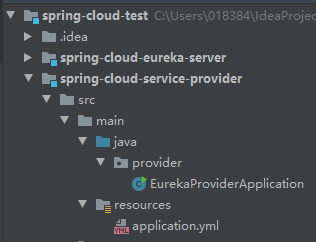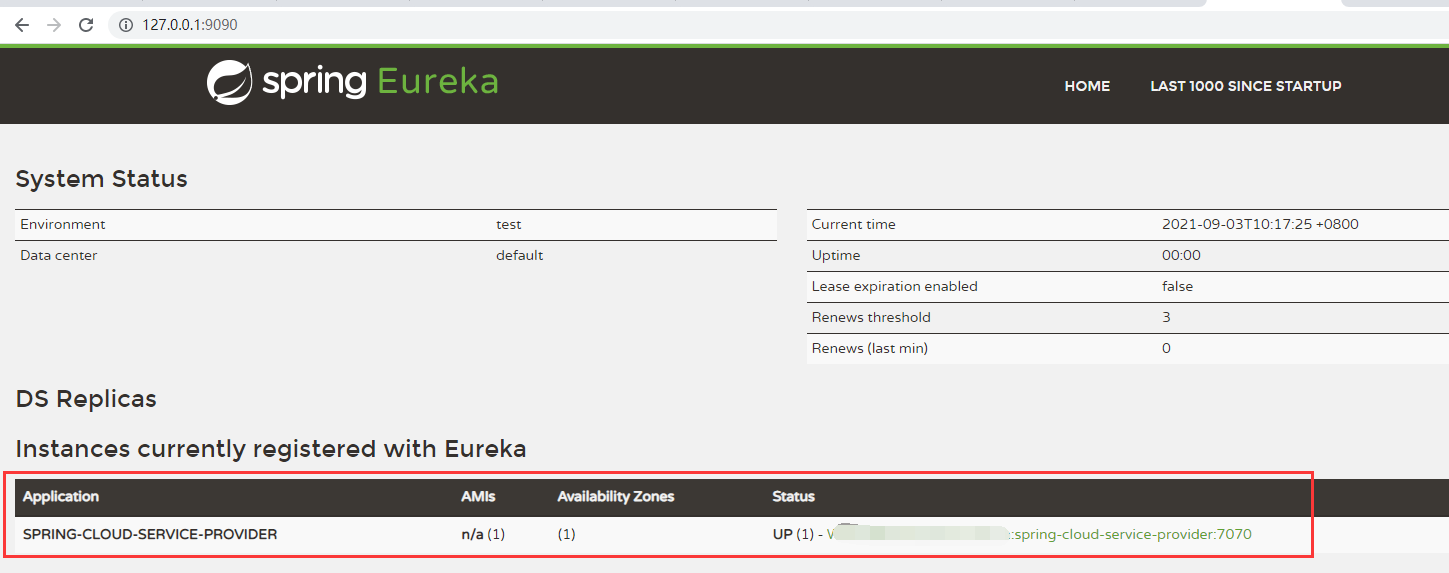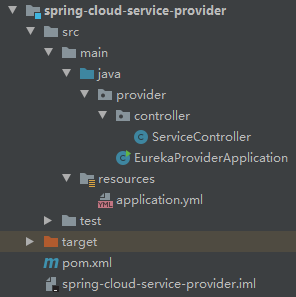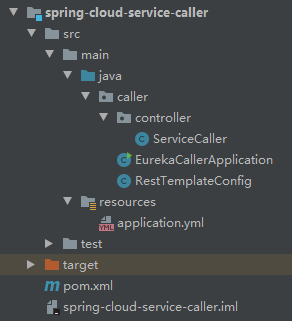Spring Cloud Eureka 实践(二)
接上一篇的内容,Eureka服务已经启动成功后,可以尝试开发服务的提供者与消费者,并注册到Eureka来实现服务的发现与调用。
首先,在父工程中继续创建服务提供者的Module,最新的目录结构如下图所示:

pom中需要添加Eureka客户端的依赖:
<artifactId>spring-cloud-provider</artifactId> <dependencies> <dependency> <groupId>org.springframework.cloud</groupId> <artifactId>spring-cloud-starter-netflix-eureka-client</artifactId> </dependency> </dependencies>
启动类中也需要添加Eureka客户端的注解@EnableDiscoveryClient:
@SpringBootApplication @EnableDiscoveryClient public class EurekaProviderApplication { public static void main(String[] args) { SpringApplication.run(EurekaProviderApplication.class, args); } }
有一些资料里会提到,添加@EnableEurekaClient或者@EnableDiscoveryClient都可以,我实际替换验证了一下,也都是可以。继续查询相关资料,两者的主要区别如下:
@EnableDiscoveryClient注解是基于spring-cloud-commons依赖,并且在classpath中实现。
@EnableEurekaClient注解是基于spring-cloud-netflix依赖,只能为Eureka作用。
这样就可以理解为什么官方也建议使用@EnableDiscoveryClient了,因为这种注解方式其实会更加通用,支持对接多种注册中心。
application.yml中需要指定上一篇中已经创建完成的Eureka地址和端口:
server:
port: 7070
spring:
application:
name: spring-cloud-service-provider
eureka:
client:
service-url:
defaultZone: http://127.0.0.1:9090/eureka
fetch-registry: true
register-with-eureka: true
接下来先后启动Eureka服务和提供者的应用来检查一下服务提供端是否注册成功:

在Controller层添加一个返回服务名的功能,目录如下:

代码也贴一下:
@RestController @RequestMapping("/query") public class ServiceController { @Value("${spring.application.name}") private String serviceName; @GetMapping("/getServiceName") public String getServiceName() { return serviceName; } }
效果是什么样呢,我们做一个简单的验证:

没问题,那么接下来添加服务调用者的应用,继续在父工程创建新的Module,pom和启动类直接参考服务提供者即可。
application.yml内容如下:
server:
port: 8080
spring:
application:
name: spring-cloud-service-caller
eureka:
client:
service-url:
defaultZone: http://localhost:9090/eureka
register-with-eureka: true
fetch-registry: true
区别于Dubbo的RPC调用,Spring Cloud Eureka通过REST访问,创建RestTemplate的实例用于调用:
@Configuration public class RestTemplateConfig { @Bean public RestTemplate getRestTemplate() { return new RestTemplate(); } }
继续在Controller层添加调用者的相关逻辑:
@RestController @RequestMapping("/caller") public class ServiceCaller { @Autowired private RestTemplate restTemplate; @Autowired private DiscoveryClient discoveryClient; @GetMapping("/queryServiceName") public String queryServiceName() { List<ServiceInstance> instances = discoveryClient.getInstances("spring-cloud-service-provider"); ServiceInstance instance = instances.get(0); String ip = instance.getHost(); int port = instance.getPort(); String url = "http://" + ip + ":" + port + "/query/getServiceName"; return restTemplate.getForObject(url, String.class); } }
需要注意,这里别选错了,否则是无法根据服务名来获取实例的:

此时的调用者应用目录结构:

最后再验证一下效果:

参考资料:
https://blog.csdn.net/yuanshangshenghuo/article/details/106962926
https://blog.csdn.net/lizhiqiang1217/article/details/89883519



